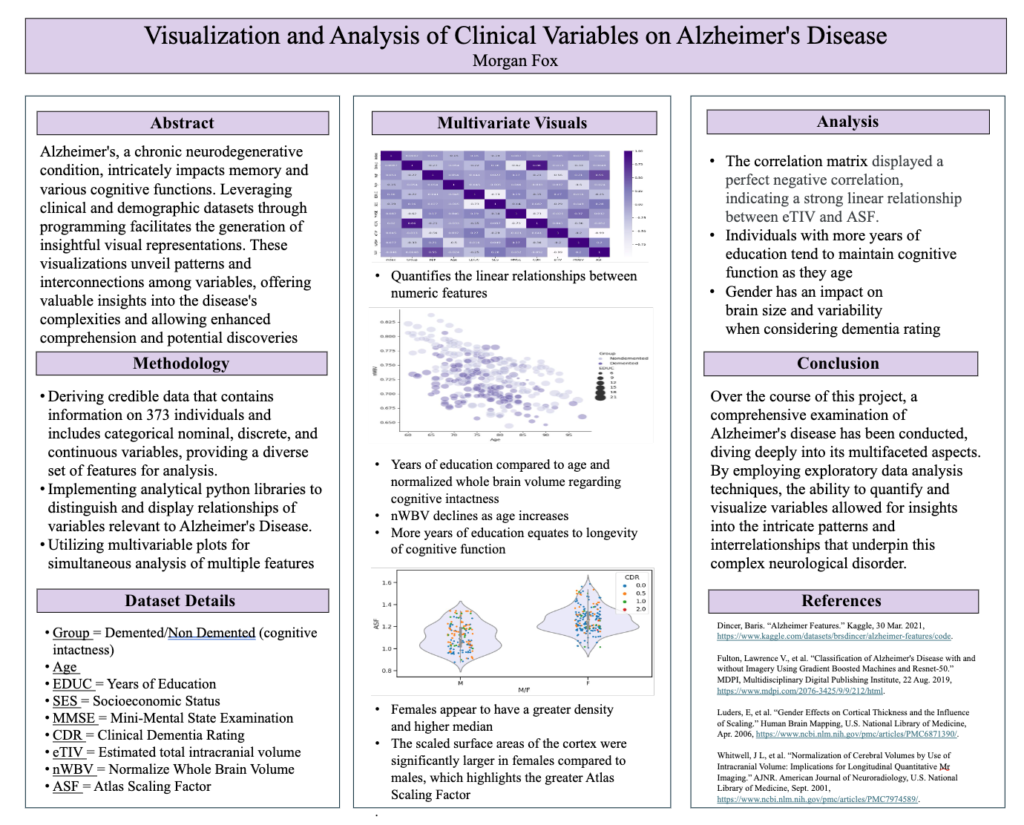We provide a space for both undergraduate and graduate students to engage in hands-on learning experiences with digital tools and techniques. Students collaborate with peers, faculty members, and digital technology specialists to create innovative projects that go beyond conventional essay writing. We also actively encourage our students to present that work at MSU’s UURAF.
UURAF 2024
Visualization and Analysis on Clinical and Socio-demographic Variables of Alzheimer Disease
By Morgan Fox
Alzheimer’s disease is a neurodegenerative condition that is characterized by progressive memory loss and cognitive decline. Medical advances have been made and utilized to temporarily reduce the symptoms of the disease, however, there is currently no cure. Alzheimer disease accounts for over half of dementia cases and is considered a leading cause of death. To identify patterns and relationships in the disease, it is essential to develop a better understanding of the condition as a whole. This can be done by extracting clinical and socio-demographic data on Alzheimer’s disease to filter, clean, and visualize through code. The python library, Pandas, is a great tool for filtering data to create accurate and relevant datasets. Utilizing the new filtered data set allows for descriptive data visualizations to be created. Coding using the python library seaborn, allows access to the create various graphs to visualize the relationship, distribution, and correlation between clinical and sociodemographic variables on Alzheimer’s disease. Having multiple diagrams permits further analysis of the disease which makes for key connections and important highlights between socio-demographic and clinical features, allowing for a better understanding of the condition as a whole.

Ghosts of MSU: Cataloging Defunct Buildings on MSU’s Campus
By Max Levanduski & Elizabeth Longcore
Our research ultimately aims to compile information about the numerous no longer existing buildings on MSU’s historic campus, the “ghost buildings”. The records and information for these buildings are scattered across plaques and signs, miscellaneous archived photos, old maps, and various books of MSU history. No one source has a comprehensive list of every building that has existed on campus, something we found shocking for a university with a history as long as MSU. For the purposes of this presentation we focused on the West Circle area of campus, as it is the oldest and has the highest number of defunct buildings. We utilized university archives, books, and signs around campus to research what buildings existed, along with when and where they were. With this information we used ArcGIS story maps to map the sites of former buildings in West Circle and plan to eventually expand this to the rest of campus.

